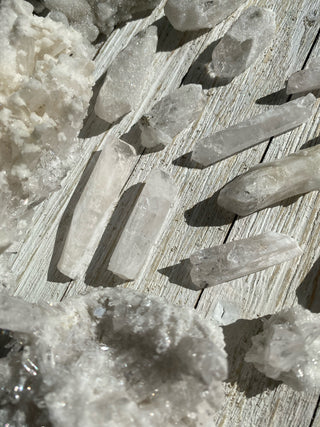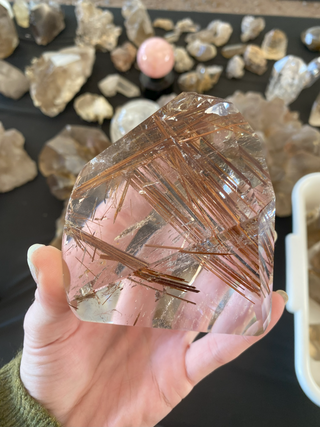What is Amber?
Amber, unlike the minerals and crystals commonly found in the gemstone world, is a fossilized resin from ancient coniferous trees, such as pine. These trees flourished millions of years ago, during prehistoric times. The resin, released by trees to heal wounds or fend off predators, occasionally encapsulated life forms of its era, such as insects or plant material. Over millions of years, this resin underwent a hardening process, transforming into the luminous gemstone we treasure today.
The Colors and Inclusions of Amber
Amber is renowned for its warm golden to honey-brown hues, but it can also be found in red, green, and even rare blue shades. What makes each piece of Amber uniquely captivating is its transparency and the inclusions trapped within. These ancient remnants offer a fascinating glimpse into prehistoric life, making Amber not just a gemstone but a window to the past.
Amber for Collectors
- Sumatran Amber - Sumatran Amber is distinguished not just by its appearance but also by its unique reaction to UV light, known as the Usambara Effect. This effect, caused by natural Sulfur inclusions, results in a distinctive blue glow under UV light, a phenomenon specific to Sumatran Blue Amber. This color change is superficial, with the UV light being completely absorbed and not penetrating the Amber, creating an observed blue glow. This feature sets Sumatran Amber apart from other varieties, adding to its mystique and allure
- Lion's Mane Amber - This variety of Amber is a rare form of Sumatran Amber. Aged between 15 to 30 million years, it gets its name from its striking resemblance to the majestic lion's mane. Characterized by a deep, rich golden-brown hue with light-catching inclusions and swirls.
- Chiapas Amber - Chiapas Amber originates from the lush rainforests of Chiapas, Mexico. Unlike other types of Amber, Chiapas Amber is esteemed for its clarity, richness in color, and the exceptional preservation of inclusions. This fossilized tree resin, primarily from the Hymenaea tree, dates back to the Miocene era, offering a window of up to 25 million years into the past.
Amber's Historical Use and Believed Properties
For centuries, Amber has been valued not just for its beauty but also for its purported healing properties. Cultures around the world have used Amber to reduce inflammation and pain. It is also believed to balance the body's energy, promote calm and clarity, and possess protective properties. Amber is often worn as a talisman or amulet to ward off negative energy or to bring good luck, highlighting its significance beyond its physical beauty.
Embracing the Essence of Amber
Collectors and enthusiasts of Amber are drawn to its timeless beauty, the stories captured in its inclusions, and the serene energy it embodies. Whether it's the warmth of its golden hues, the rare beauty of Lion's Mane Amber, or the intriguing inclusions of Chiapas Amber, each piece tells a story of ancient times, natural beauty, and the mystical properties attributed to this ancient gem.
Amber invites us to connect with the natural world's ancient history, reminding us of the Earth's long and vibrant narrative. Its enduring appeal makes it a cherished gemstone for collectors, healers, and anyone drawn to its warm, protective energy and the timeless stories it holds.


